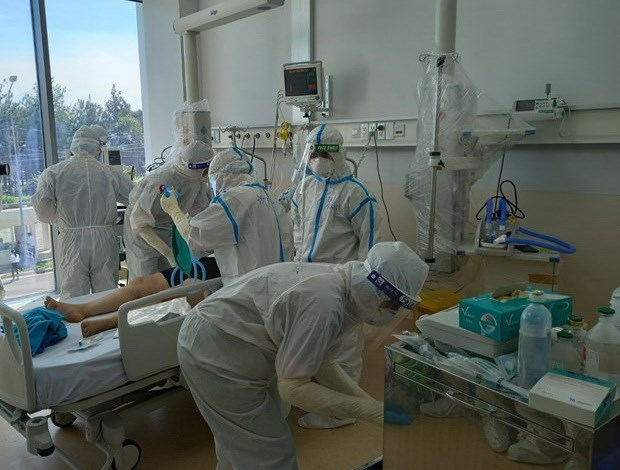 Society
Society

Prime Minister Phạm Minh Chính has asked localities to speed up COVID-19 vaccinations as the pandemic rages on across the nation and infections continue to rise.

|
| Treating a COVID patient in Hồ Chí Minh City. — Photo VNA/VNS |
HÀ NỘI — Prime Minister Phạm Minh Chính has asked localities to speed up COVID-19 vaccinations as the pandemic rages on across the nation and infections continue to rise.
All citizens over the age of 18 must be fully vaccinated by December 31 (with exceptions to contraindications), especially people over 50 and people with medical conditions. Youngsters aged 12-18 must be fully vaccinated by January 2022, and people over 18 will receive a booster shot within the first quarter of 2022.
A document issued by the Government's Office on Thursday stated: “The National Steering Committee for COVID-19 prevention and control leaders and local authorities are accountable to the Government and the Prime Minister in regards to the vaccination progress in their localities.
"The Ministry of Health must provide and allocate enough vaccines to the localities, as well as provide training for safe inoculation. All activities must be monitored well to prevent corruption.”
As for concerns over Omicron, the Prime Minister ordered the Ministries of Health, Transport, Public Security, Defense, and Foreign Affairs to ramp up the monitoring of people who came from countries that have registered cases of the Omicron variant, in all air, land, and sea traffic, to “stop the penetration and spread of this variant in our country”.
Rapid antigen tests must be conducted for airplane passengers pre-and post-flight, and all suspected cases must be quarantined and tested for Omicron. The Prime Minister also asked the Ministry of Health to carry out comprehensive research on the Omicron variant to prepare countermeasures if needed.
Protecting high-risk COVID patients should be a priority
As COVID cases rise nationwide and worldwide, the Ministry of Health ordered hospitals and medical facilities to continue protecting patients with high risk, to reduce fatalities.
“Over 50 per cent of severe hospitalised cases are unvaccinated, the others are either vaccinated with one dose, or have pre-existing conditions,” said Dr Hoàng Bùi Hải, Deputy Director of the COVID-19 Treatment Hospital, Head of the ICU Department, Hà Nội Medical University Hospital.
“Data from Hồ Chí Minh City and southern localities has shown that vaccines work in reducing severe cases.”
Hải added that a good patient management strategy will ease the pressure on hospital capacity.
“If every COVID patient, even the ones with just a slight fever go to the hospital, eventually there would be no space, and no medical workers to take care of everyone,” said Hải.
"Patients with mild symptoms should be treated at home with monitoring and support from local medical facilities, and only go to the hospital when the symptoms get worse. Most patients do not exhibit bad symptoms in the early days.”
According to Hải, this is a chance for the local medical facilities and family doctor systems to improve.
As cases continue to rise, the Ministry of Health ordered localities to review and reflect, as well as fix problems in the management and treatment of COVID patients. Medicines and equipment, especially protective equipment and oxygen must be ready in all stages and levels of health facilities.
The MOH also launched a campaign called “Protecting the ones at risk”, by executing multiple measures. The campaign includes searching and vaccinating people that are not fully vaccinated against COVID, especially people over the age of 50, people with health conditions, and immunodeficiencies.
The campaign works to ensure cleanliness and hygiene, as well as airflow in COVID treatment facilities; rearrangement of human resources, and shift planning to reduce overworking of medical workers. The community and volunteers should also be involved in helping COVID patients being treated at home.
The MOH orders local authorities to properly execute the classification of COVID patients, to apply necessary measures in isolation and treatment. Local medical centres should list all COVID-19 patients in their area, classify and manage them, as well as monitor the blood oxygen levels of the patients to quickly transfer them to higher levels if needed. — VNS